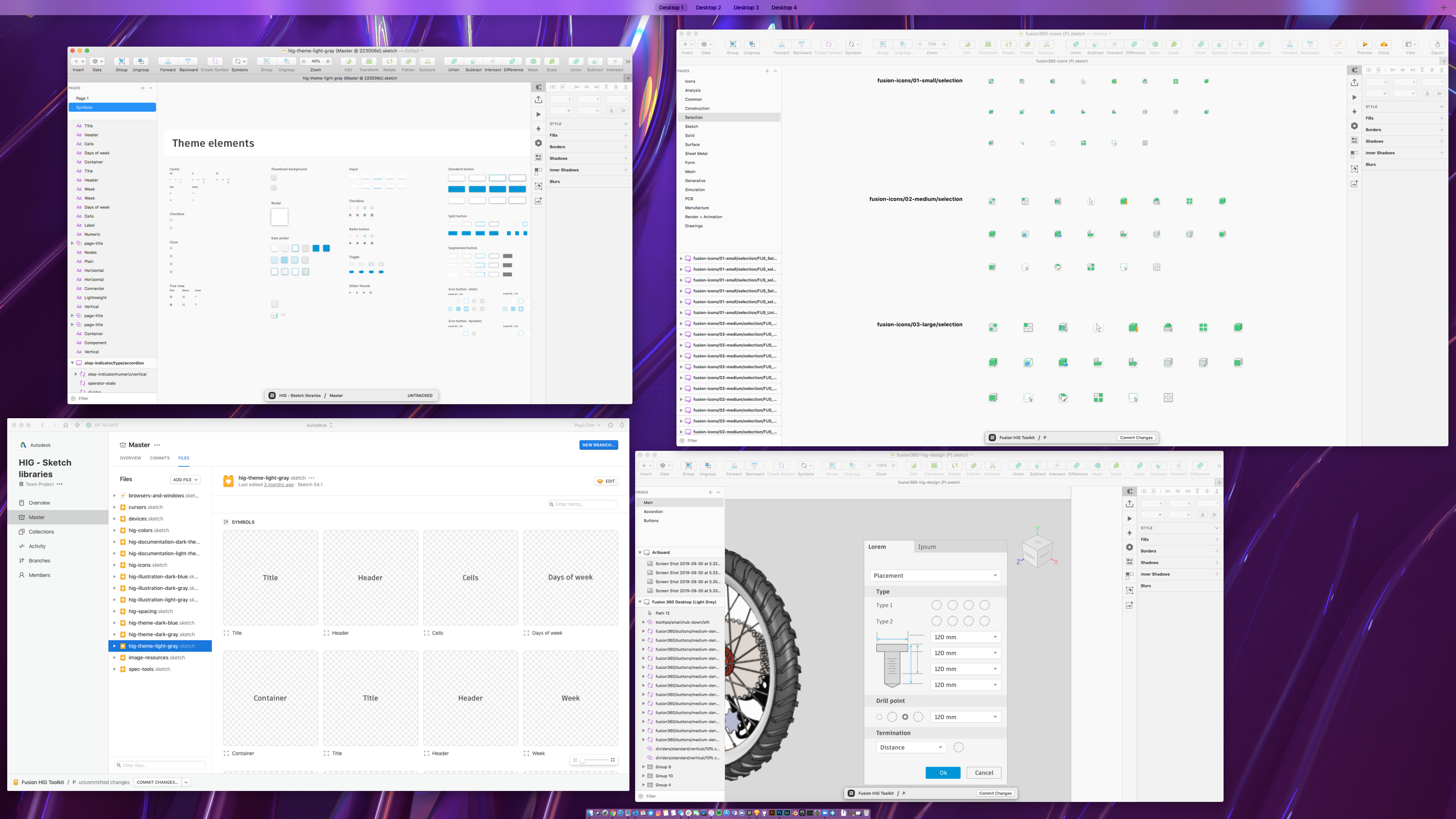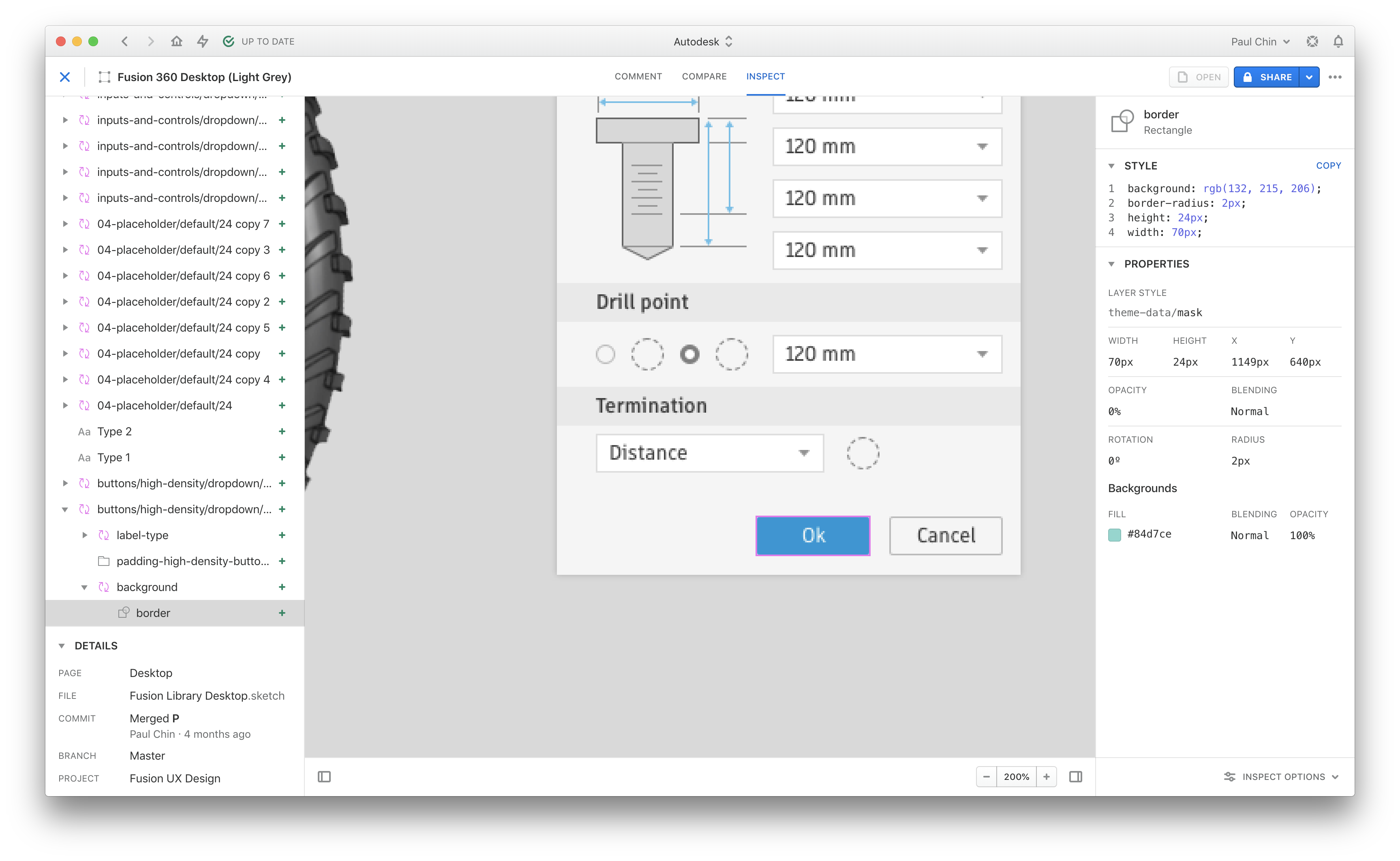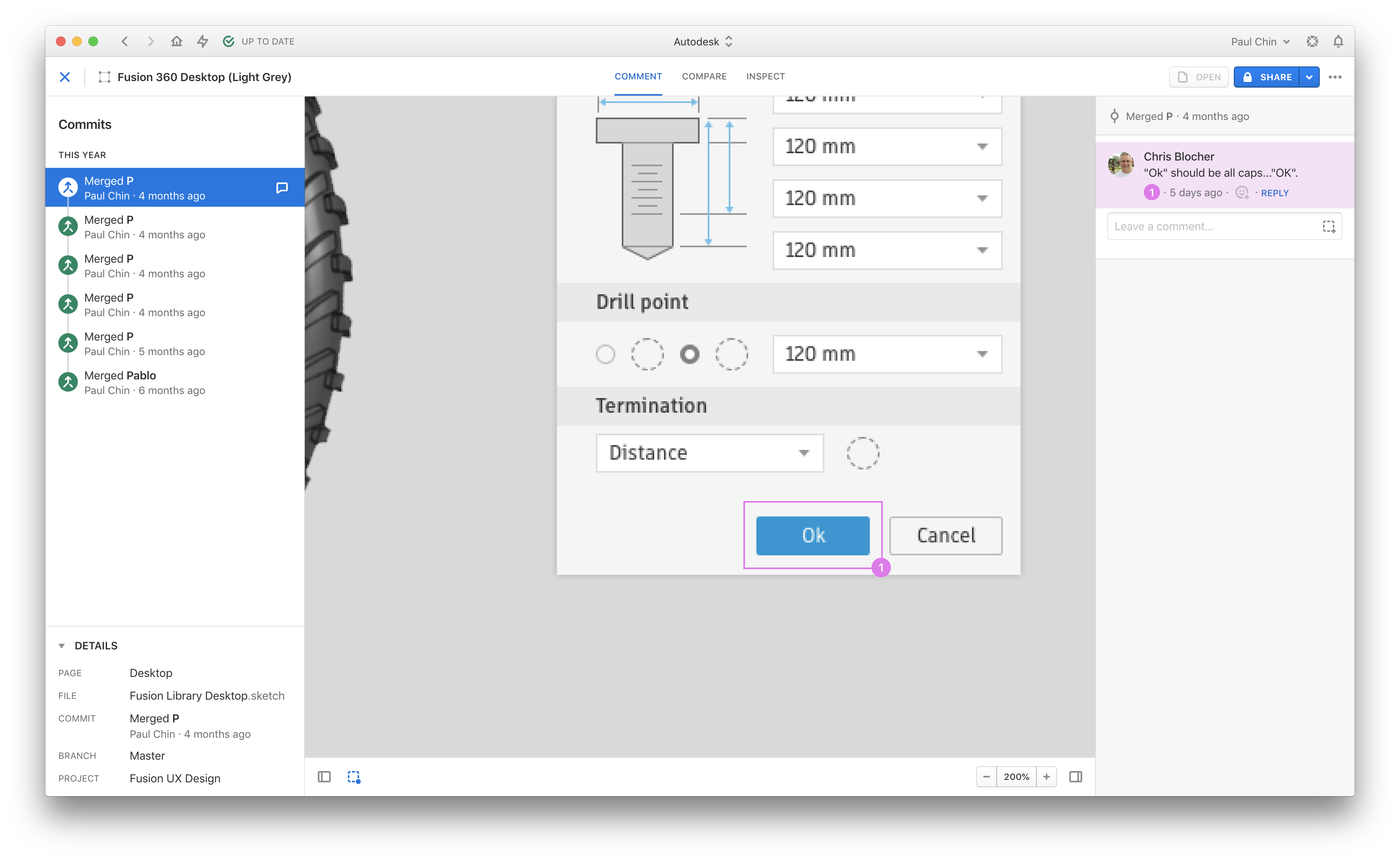fusion design system.
data-driven manufacturing.
data-driven manufacturing.
Client
Autodesk
Role
Visual UX Designer
Project Brief
The Fusion design system is the intersection of Autodesk's Human Interface Guidelines (HIG), design tools Sketch and Abstract, and processes developed to centralise design patterns and components commonly used by a large UX team.
Autodesk is currently in the process of converging all their manufacturing products under the umbrella of a larger Fusion 360 platform. The product is being re-imagined and new tools/workflows are being built using the company's Human Interface Guidelines (HIG). A substantial part of this transition involves creating a new system of consumption and contribution for high fidelity Fusion designs and components, as integrated into the HIG design toolkit utilising Sketch and Abstract.
Connecting dots
With over 30 products now part of Fusion with different teams working on each one, not only is a unified design system absolutely critical, but so is a unified toolset which adapts and evolves with the needs of the team. The HIG is not meant to be prescriptive but, rather, offers recommendations in applications of its components based on common needs across Autodesk products. For any designs, content, or interaction patterns not offered, the HIG team also solicits contribution from other designers as a way of auditing patterns and needs across the company. Designing a HIG-based system for Fusion has required thoroughly learning the HIG in order to build Fusion-specific Sketch libraries which seamlessly interface with their own.
“
A design system of any kind can't simply focus on the components themselves; it has to be built for the people who will use them.
Scott Reese, Senior VP of Manufacturing, Cloud & Production Products at Autodesk
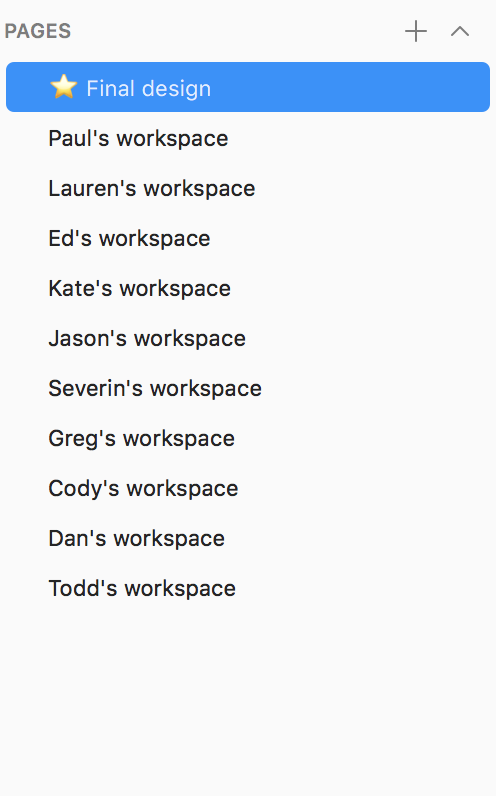
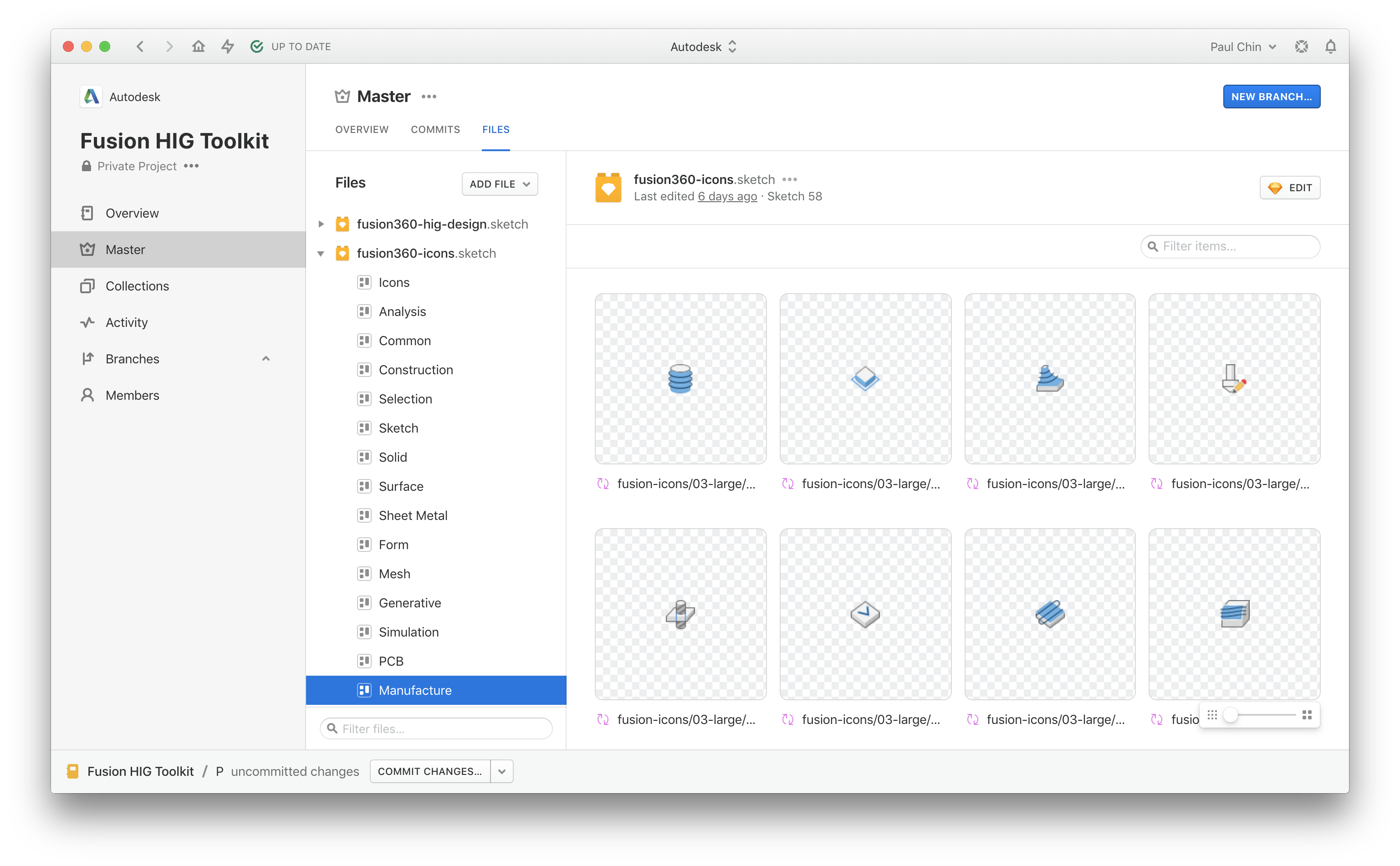
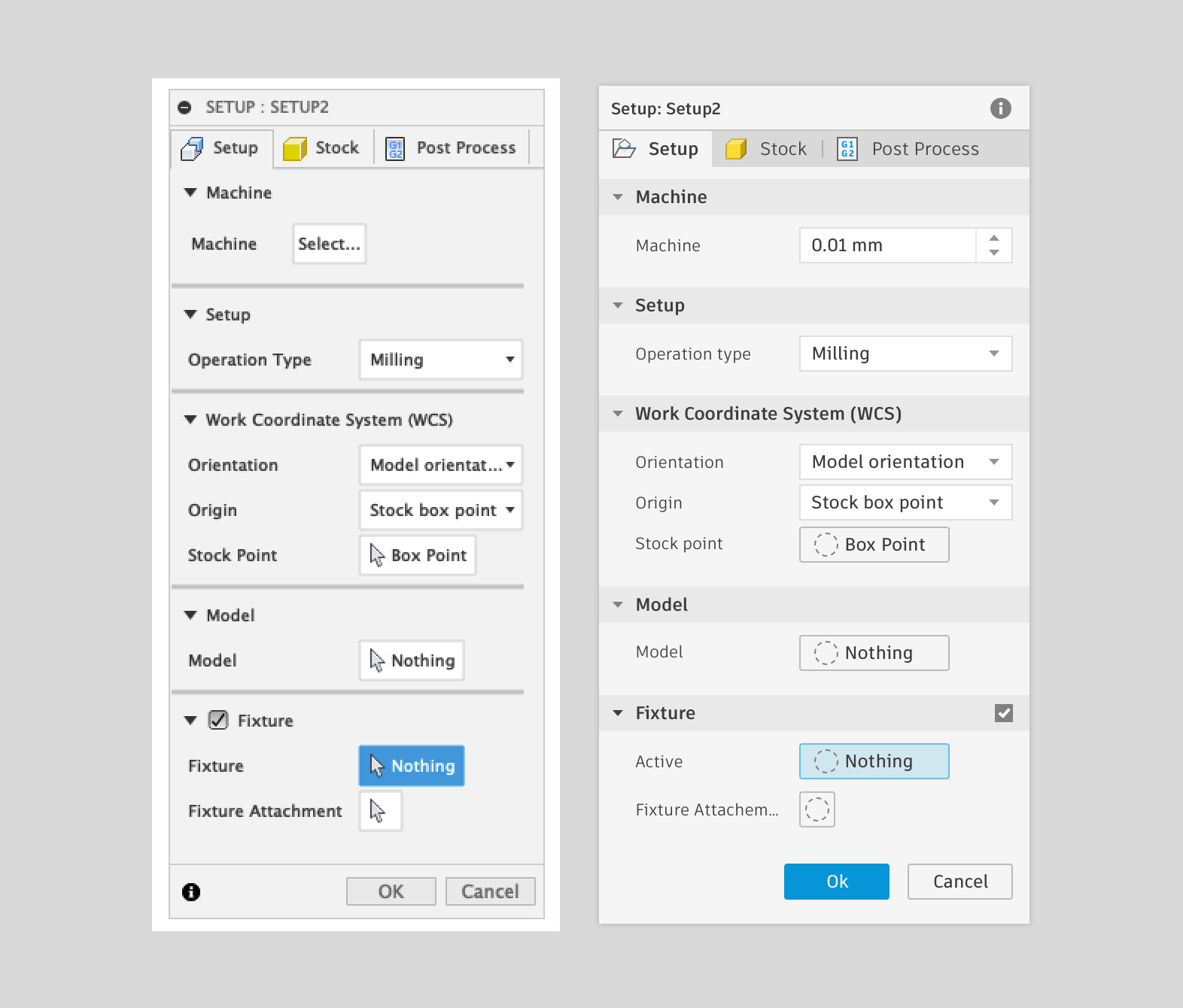
Keeping everyone in sync
In addition to devloping a system around our design elements, it's also been important to put one in place for our processes. Sketch and Abstract have enabled us to access each other's work easily, but equally impactful was developing a processes based around the ways we were all working with each other (and with other stakeholders) to optimise and fully take advantage of our tools as part of a large team in collaboration. A high priority in developing this system has been centralisation and visibility of our most common elements, and enabling concurrent work in a single file amongst designers.
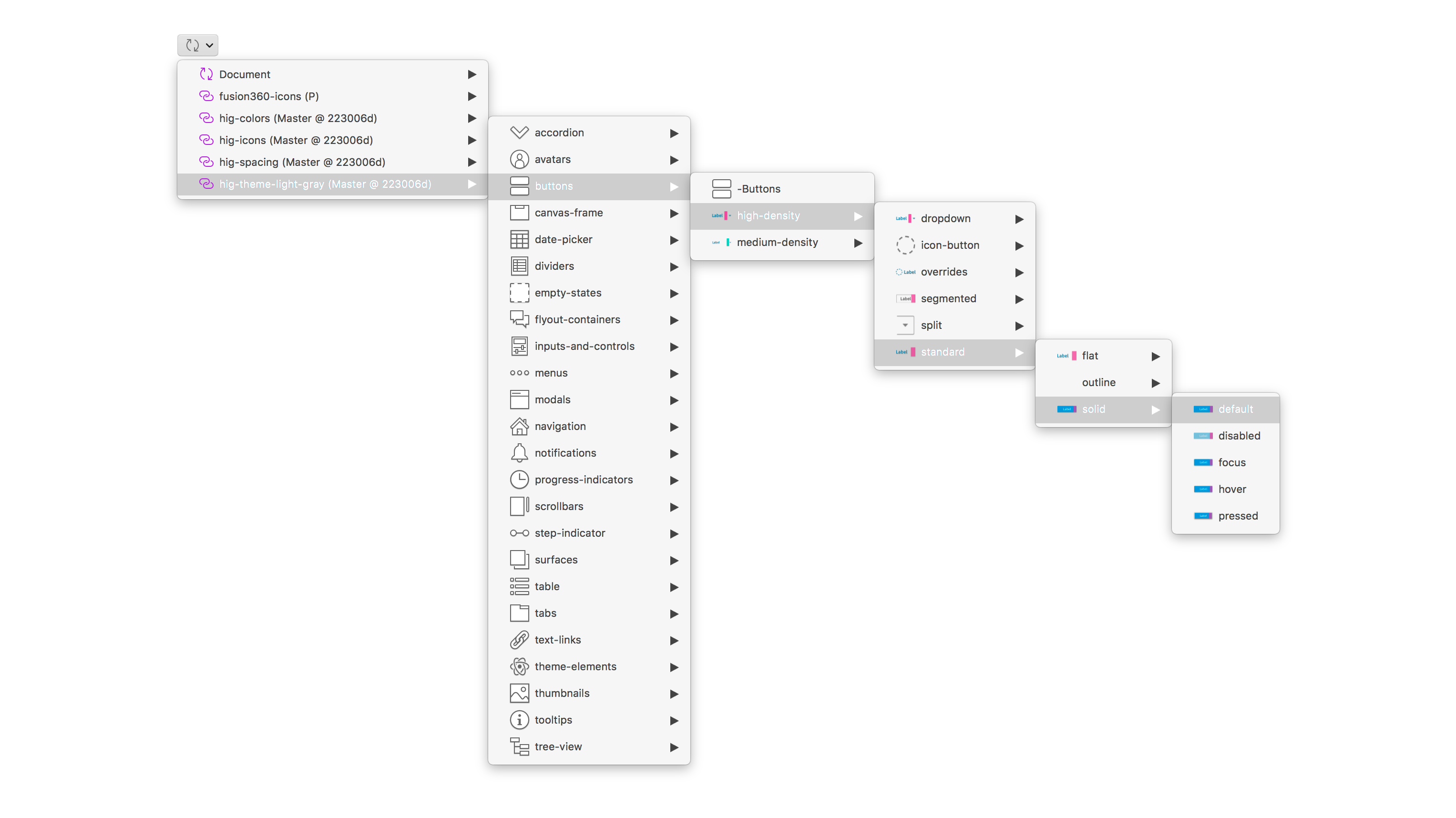
“
We're building for Autodesk customers, but also Autodesk teams, and the things we build have to fit into their existing workflows; we need to make their lives easier.
Jason Lakis, Creative Director of Human Interface Guidelines at Autodesk
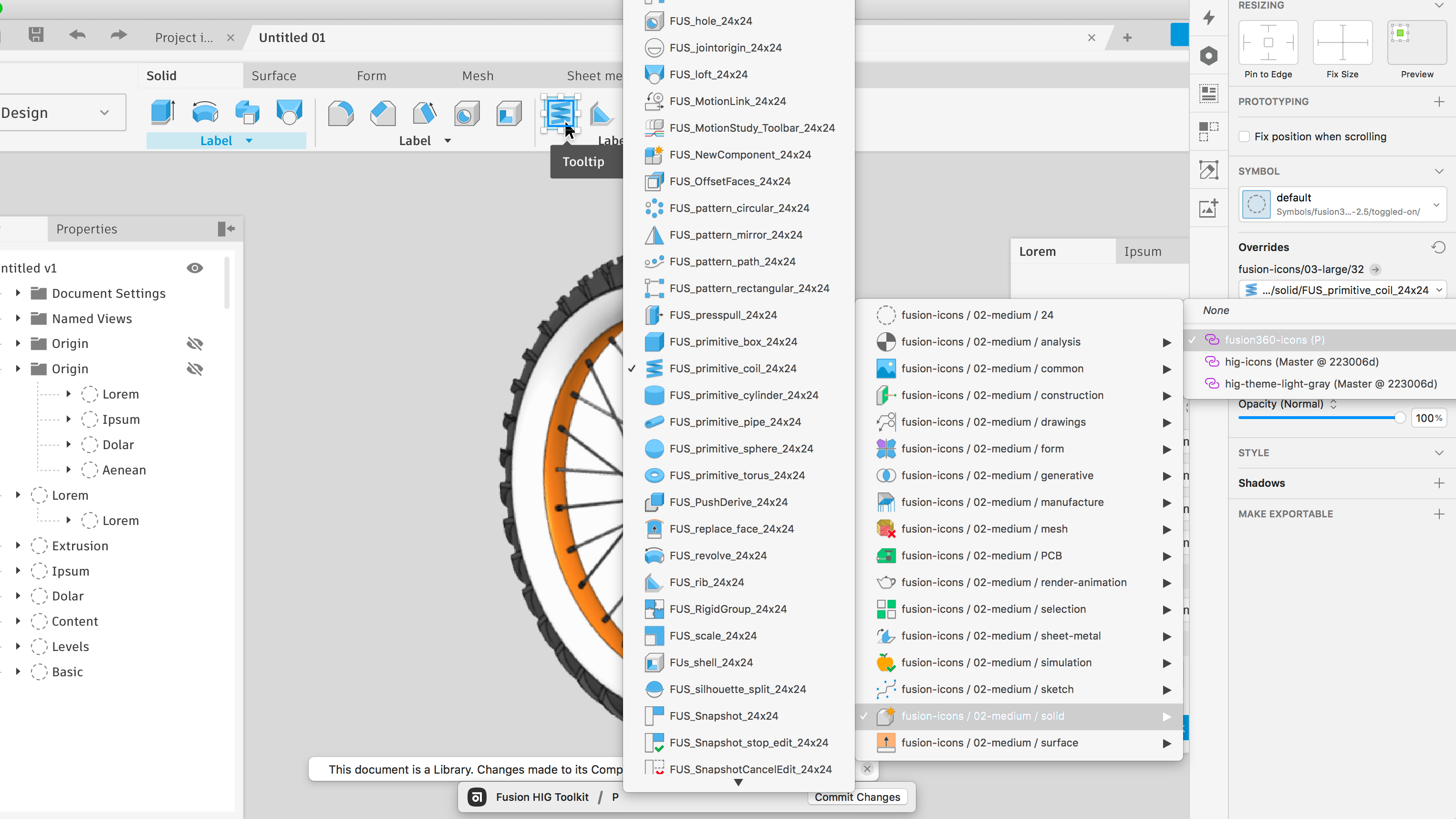
Stakeholder validated design
Designing a product as massive as Fusion requires UX to operate like a well oiled machine. In order to have the most impact as a UX team, we need to offer our stakeholders on the product team clarity on our designs. Using Abstract, we're able to offer developers pixel-perfect specs on every individual component, and content experience designers are able to find and inform us of any content errors and syntactic changes to be made. By allowing our partners in on our work, we're able to quickly and easily integrate this feedback into our process for quick and iterative design work.
